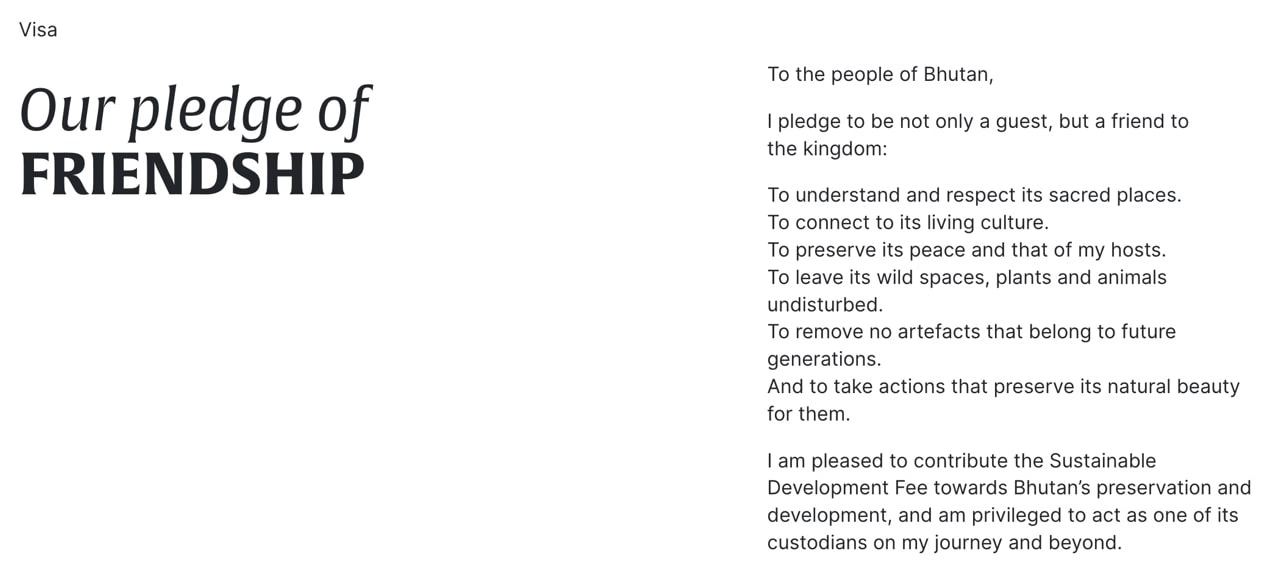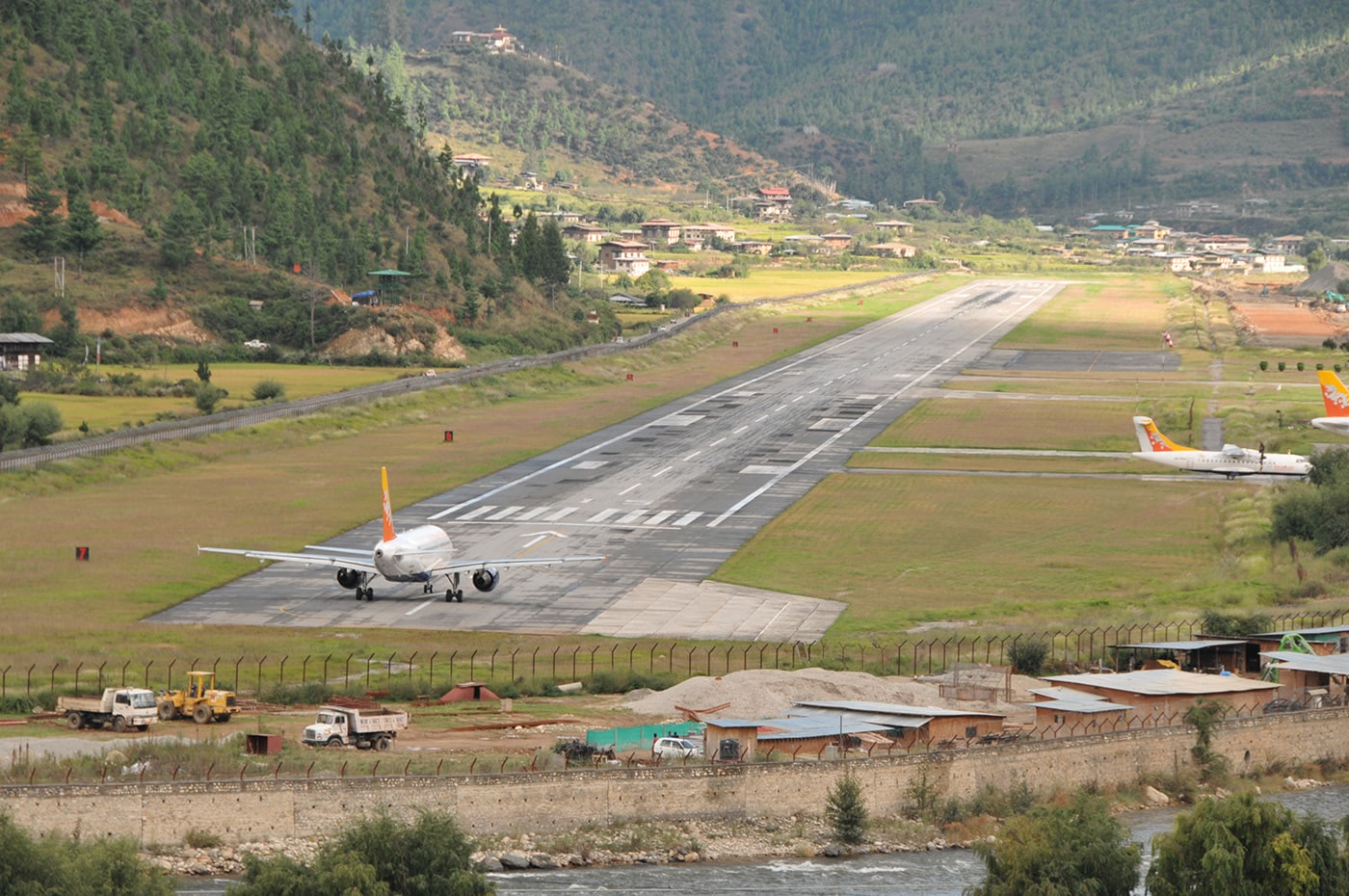Going on a trip to the Land of the Thunder Dragon to the bustling Lion City? Drukair, the Royal Bhutan Airlines, offers a direct flight that'll take you away from the skyscrapers of Singapore to the serene mountains of Bhutan.
Before you pack your bags and go to the last Shangri-La or get a flight to Singapore to Bhutan, there are a few things that you need to know.
Bhutan is not your average holiday destination. This kingdom, positioned between India and Tibet, is a place where happiness is measured as carefully as GDP.
Known locally as "Druk Yul" or the Land of the Thunder Dragon, Bhutan's got a rep for being one of the most exclusive travel spots on the planet. Of course, don't go thinking you can just rock up and start exploring since Bhutan's got some strict tourism policies to keep things in shape.
They used to have a cap of 65,000 tourists a year - imagine that! While they have loosened up a bit, you still gotta pay a daily "Sustainable Development Fee" of US$100 to help keep Bhutan as pristine.
Language-wise, Dzongkha is the main language but you'll hear up to 19 different ones being spoken. Don't panic though since English is widely used which means you won't be completely lost in translation.
Notably, Bhutan is the only carbon-negative country in the world and they are legally required to keep at least 60% of their land under forest cover. Right now, it's sitting at about 70% so when you're on your Singapore to Bhutan journey, you're literally heading to the greenest country on Earth.
One more thing - cash is the main mode of payment in Bhutan. Their currency, the Ngultrum, is pegged to the Indian Rupee, but don't count on your credit card working everywhere. So, it's always good to have some cash on hand.
Finally, remember to use your right hand when giving or receiving things because it's considered more polite.
Bhutan's not your typical "show up and wing it" kind of place. First, you need a visa. No ifs, ands, or buts about it.
Unless you're from India, Bangladesh, or the Maldives, you need to apply online and fork out US$40 per person. Sounds like a hassle? Don't worry since your tour operator can do it for you.
Singapore passport holders need to secure a valid Visa before travelling to Bhutan. Your passport also needs to be valid for at least six months from when you arrive in Bhutan. Once you've ticked all these boxes, you're ready for your Singapore to Bhutan adventure.
The Sustainable Development Fee mentioned earlier is non-negotiable. It's US$100 per day for adults, but kids between 6 and 12 get a 50% discount, and the little ones under 6 get in for free.
There is also the Pledge of Friendship to sign. This is Bhutan's way of making sure you promise to be good while you're there.

When you have all your paperwork sorted, you don't need to embark on some epic, multi-stop odyssey to get there.
DrukAir, the Royal Bhutan Airlines, has been flying direct from Singapore to Bhutan (Paro International Airport since 2012). How great is that?
These flights operate thrice a week on Monday, Thursday, and Saturday. Set your alarm clock because you'll be taking off from Changi bright and early. The flight time is about 6 hours and 15 minutes - just long enough to watch a couple of movies or catch up on some shut-eye before your Bhutanese adventure begins.
A round-trip ticket will set you back around S$1,500 per person (price may vary, please check here. That includes your baggage of 30kg and admin fees.
One more thing, brace yourself for one of the most spectacular landings you'll ever experience. Paro Airport is nestled in a deep valley surrounded by mountains. As you descend you will surely feel like you could reach out and touch the Himalayan peaks.

When it’s time to head back to the Little Red Dot, getting from Bhutan back to Singapore is pretty much the reverse of how you got there. Drukair has return flights from Paro to Singapore taking off on Tuesday, Friday, and Sunday.
The flight time is roughly the same as your outbound journey, about 6 hours and 15 minutes. Try to snag a seat on the left side of the plane because if the weather's good, you might just catch a glimpse of Mount Everest as you're flying out.
Please note that all flights are subject to change on a daily basis.
While it won’t be like your average holiday, remember that Bhutan is not your average destination also. Remember that it’s an experience you immerse yourself in and a chance to step away from the hustle and bustle of Singapore life.
Ready to book a roundtrip ticket from Singapore to Bhutan? Book for a flight today!
The best time for a visit to Bhutan is usually deemed the spring months of March through May and autumn from September to November. During these times, there will be mild temperatures as well as breathtaking views with flowers in full bloom and amazing Himalayan vistas.
For a trip from Singapore to Bhutan, consider planning a 7-day cultural tour or a 10-day immersive journey that takes you deeper into the captivating landscapes of central Bhutan. A 7-day tour allows you to experience Bhutan’s distinctive culture and iconic landmarks at a relaxed pace. For a more in-depth exploration, a 10-day itinerary provides ample time to venture into the heart of the country, experiencing its breathtaking scenery and rich traditions without feeling rushed.
Yes, as of September 2022, tourists can travel without a tour guide (and driver) in Bhutan. You are not required to book your trip through a tour operator but it is still highly encouraged for you to book a guided tour in Bhutan as local guides are invaluable. Through a guided tour to Bhutan, you will benefit tremendously from the local expertise and knowledge on the unique Bhutanese culture. The local guides are also well-trained in handling any special requests or assistance that you may have along the trip to ensure that you have the best trip of your life.
Soultrips.co and Druk Asia, one of the pioneer travel agencies specialising in tours to Bhutan are renowned for our expertise in organising trips to Bhutan. We have served travellers worldwide and catered to all types of travellers from solo to large group tours. Tour packages to Bhutan are highly customisable for the best experience.
No, the acceptable currency is the Bhutanese Ngultrum (BTN). US Dollars are also widely accepted. It's advisable to exchange some currency before arriving or withdraw local currency from ATMs in major towns. You can exchange Singapore dollar for Ngultrum (BTN) in money changers or banks. Do note that Bhutan only accepts 10 major foreign currencies for exchange: U.S. Dollar, Pound Sterling, Euro, Japanese Yen, Swiss Franc, Hong Kong Dollar, Canadian Dollar, Danish Kroner, Australian Dollar and Singapore Dollars.
Bhutanese culture is deeply Buddhist and conservative. Visitors are expected to dress modestly, especially when visiting religious sites. It's also important to show respect for local customs and traditions.
Check out the Do’s and Don’ts in Bhutan.
When travelling to Bhutan, it’s essential to pack for varying climates, as temperatures can differ greatly depending on altitude and season.
Check out the ultimate Bhutan packing list for the full list of items to prepare.
Don’t forget to grab a copy of the Bhutan Travelog to learn more about the unique Bhutanese culture prior to your trip.
Yes, while Dzongkha is the official language of Bhutan, English is widely spoken in Bhutan, especially by those involved in the tourism industry, making it easy for Singaporeans to communicate during their visit.
You can expect to hear a lot of “la” at the end of every sentence in Bhutan. The "la" used in Bhutan differs from the "lah" commonly heard in Singapore. In Bhutan, "la" is a polite and respectful term added at the end of sentences to show courtesy, similar to "please" or "thank you" in English. For instance, saying "Yes, la" adds warmth and respect to the response.
In Singapore, "lah" is a colloquial expression used in Singlish (Singaporean English) to add emphasis or convey familiarity, like in "Okay, lah!" While both add flavor to conversation, Bhutan's "la" is about politeness, whereas Singapore’s "lah" emphasizes friendliness or casualness.
Learn basic Dzongkha, Bhutan’s official language.
Traveling from Singapore to Bhutan brings you to one of Asia’s safest and most welcoming countries. Crime rates are remarkably low, and the locals are known for their kindness and hospitality.
A unique aspect of Bhutan is its absence of traffic lights! Instead, traffic wardens direct the flow, adding to the country's charm. Solo female travelers can also feel secure here; however, it’s still advisable to stay with your guide after dark for added peace of mind. If you’re travelling with Druk Asia, you can also request for a female guide to accompany you throughout your trip.
Unlike in Singapore, tap water in Bhutan isn’t safe for direct consumption. But no need to worry—your guide will ensure you have bottled water throughout your trip.
Bhutanese cuisine is flavorful, unique, and heavily influenced by local ingredients. Rice is a staple, often accompanied by vegetables, meats, and the famously spicy ema datshi—a chili and cheese dish that’s considered Bhutan’s national food.
Dishes are generally spicy, as Bhutanese people love their chilies, but milder options are available for visitors. Locally grown red rice, yak meat, and dairy from yaks or cows also feature prominently, providing a hearty and warming meal in the chilly Himalayan climate. Many dishes are vegetarian-friendly, and meals are often served with a side of suja (butter tea) or ara (a traditional rice wine).
Check out other must-try dishes in Bhutan.